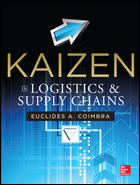Charlottesville, VA — A new report on the low-cost 3D printing market from SmarTech Markets Publishing concludes that by 2021, revenues generated by the sector will reach over $4 billion, with $2.3 billion coming from hardware and $1.7 billion in materials revenues.
For more details on the new report, “Opportunities in Low-Cost 3D Printing: Technologies, Materials and Markets," click here.
About the Report
This report focuses on those market segments where SmarTech’s believes low-cost 3D printing will make money in the next decade. It provides the most thorough market analysis available of where the low-cost 3D printer market is headed. This report includes:
• Ten-year forecasts for low-cost printer hardware by printing technology, with breakouts by type of printing technology. Forecasts as presented in unit shipment and revenue terms
• Ten-year forecasts of material shipments by weight and revenue with breakouts by type of material. The material type breakout is extremely granular and, for example, includes specific forecasts by filament type
• Market share estimates for more than a dozen of the top competitors in the low-cost printer market
• Analysis of the end-user markets for low-cost printers including both the “traditional” consumer market and the emerging market for low-cost printers at larger corporations.
Among the companies whose strategies are discussed in this report are 3D Systems, MakerBot, Printrbot, Ultimaker, PP3DP, Aleph Objects, Flashforge, Solidoodle, Form 1, LeapFrog, XYZ Printing, Zortrax, Afinia, Robo3D and Type A Machines.
Despite some highly publicized failures, the low-cost 3D printer business had a good year in 2015 with sales of around 270,000 machines, compared to 190,000 in 2014. A major contribution to this success has been sales to larger organizations including Fortune 500 companies. Dell, Siemens, Caterpillar, Boeing, Ford, have all significantly increased their purchasing of low-cost printers due to the access these machines provide for distributed prototyping.
From the Report
The report provides both the necessary market data and competitive analysis for firms — printer makers, retailers, materials companies, service providers, and others — that are trying to make money in the low-cost printing sector. It is also designed to clarify the many misconceptions that have emerged with regard to the low-cost printer market in 2016 and beyond and to demonstrate which strategies will help the low-cost segment emerge from being the “Wild West” of 3D printing market looks some way off, SmarTech is seeing the rapid development of a professional market for 3D printers — at architects and designers, for example.
In 2015, the most visible names such as MakerBot and 3D Systems struggled greatly but other firms did well. RepRaps now have the largest share of the low-cost printer market followed by Ulitmaker and XYZ Printing.
The low-cost 3D printed materials market is dominated by the vibrant thermoplastic filament market, which will reach $1.5 billion in sales in 2021. Meanwhile, a degree of cooperation has been observed in 2015, partnering specialty material developers with larger chemical companies in order to develop high quality specialty filaments matched with specific applications or material properties. Availability of specialty and advanced thermoplastic filaments is driving new opportunities in the low-cost 3D printing sector, which has increased the total average pricing of both filaments, and the greater low-cost 3D printing materials market, by an estimated 3.6 percent year over year.


